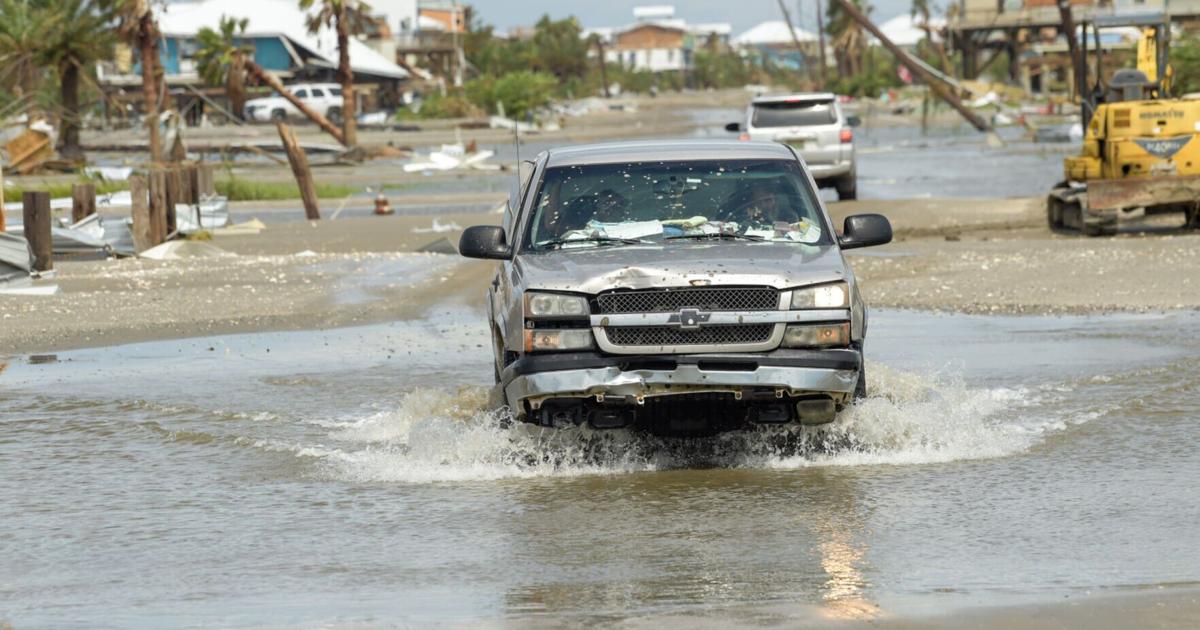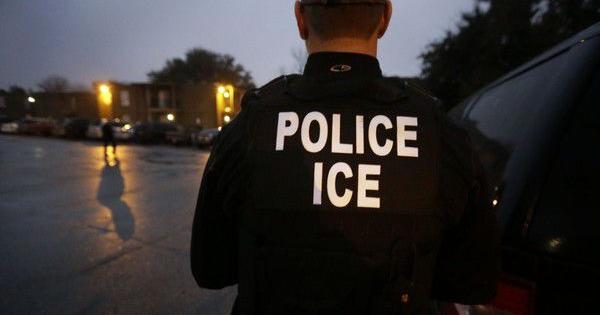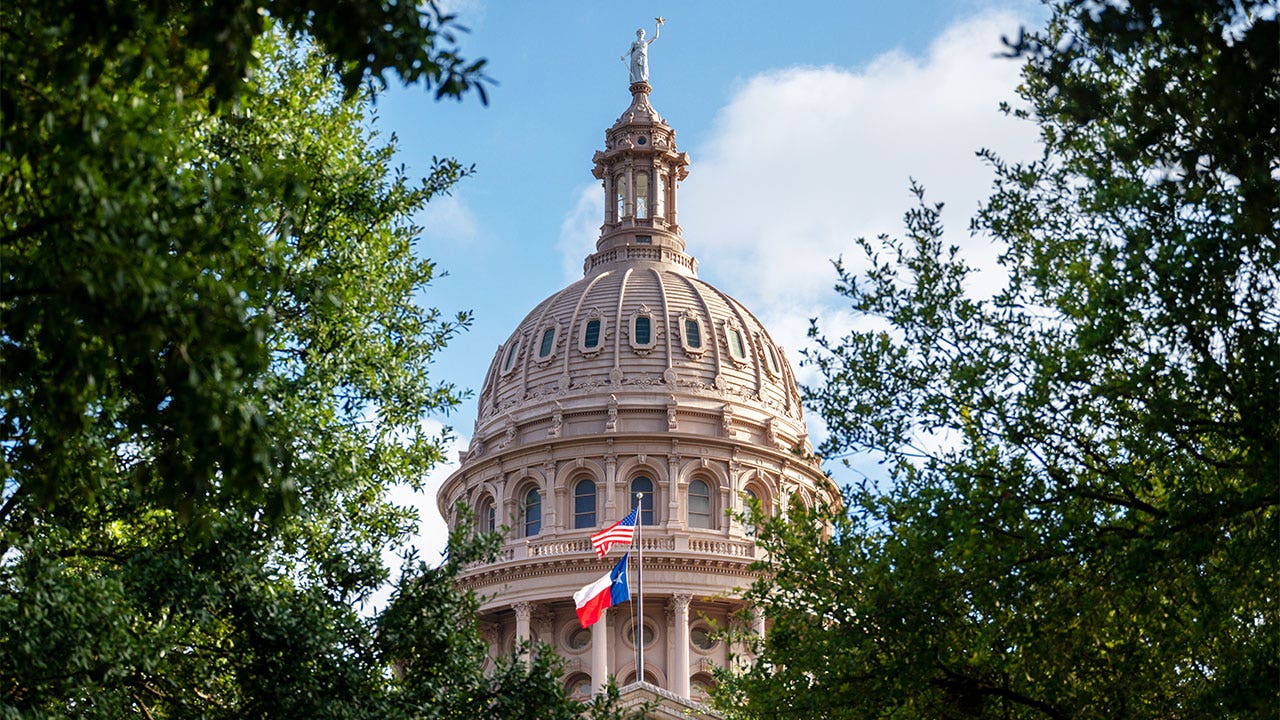Louisiana
Another hurricane season arrives. Will Louisiana again be spared?

Another hurricane season arrives on Thursday, and forecasts are being rolled out with insightful analysis of weather patterns in the months ahead. But here’s the bottom line for Louisianans who’ve seen too much destruction: Nobody really knows anything.
At least nothing definitive. There are certainly indicators that provide a reasonable basis for seasonal forecasts, ranging from El Nino to warmer-than-usual sea surface temperatures, pointing to an average or slightly below average number of storms. Technological improvements are also allowing for better warning systems when hurricanes do form.
But no matter the forecasts, Louisiana’s coast is always at risk of being hit by a strong hurricane. And as everyone from the nation’s foremost weather experts to your neighbor down the street will tell you, it only takes one.
That’s why Louisiana officials are working to get the word out now that preparations are in order. Plot out an evacuation route that takes you north and don’t expect to rely on contraflow. Review your insurance coverage. Know how you’re going to care for elderly or sick relatives.
New Orleans’ new $14.6 billion levee and floodwall system is a vast improvement over pre-Katrina defenses, but it will not protect against all storms. The Army Corps of Engineers has in the meantime been investigating pump corrosion in a key part of that system, but it has made contingency plans and says it will have more than enough capacity in place to pump out rainfall.
This season, which runs through Nov. 30, is also arriving as families continue to recover from the brutal years of 2020 and 2021 – a span that saw two of the most powerful storms to ever make landfall in the state in Hurricanes Laura and Ida, both Category 4 monsters with 150 mph winds. Laura ripped through southwest Louisiana in 2020 and Ida leveled parts of the southeast in 2021.
Hurricanes Delta, a Category 2, and Zeta, a Category 1, also hit during that timeframe. Last year was mercifully quiet for Louisiana, but residents need only to look east to where many spend their summer vacations for reminders. Hurricane Ian plowed into southwestern Florida as a Category 4, left behind around $112 billion in damage and killed more than 150 people, directly or indirectly.
Ian was the third-costliest U.S. storm on record, trailing Hurricane Harvey at No. 2 and Katrina as the costliest ever at $193 billion, adjusted for inflation. Ida is sixth at $81 billion.
“There’s a tremendous amount of recovery ongoing, and communities may be more vulnerable or have challenges relative to that recovery that puts them in a posture to make it even more important that we do our very best to be prepared,” said Casey Tingle, director of the Governor’s Office of Homeland Security and Emergency Preparedness.
“And certainly we know that that’s true for families across the state that may still be struggling with insurance or other things on the recovery side and having to deal with a blue roof perhaps, or living in a travel trailer or mobile home.”
A humorous sign on the marquee of the Lake Pontchartrain Causeway in anticipation of Hurricane Ida in Metairie, Friday, Aug. 27, 2021. (Staff photo by David Grunfeld, NOLA.com | The Times-Picayune | The New Orleans Advocate)
A rare and average year?
Forecasts this year have taken into account some important changes in weather patterns. For the past few years, a La Nina pattern has been in place, and that has contributed to extremely active storm seasons. La Nina has now ended and El Nino is expected to be in place this year.
Their effects on hurricane season have mainly to do with wind shear. La Nina leads to less wind shear in the Atlantic, which is favorable to hurricane formation.
El Nino does the opposite. It leads to more wind shear in the Atlantic, and that essentially chops across storms and can prevent hurricanes from forming. Still, there are no guarantees, and strong hurricanes do form in El Nino years.
Take Hurricane Betsy in 1965, which many New Orleanians will remember – or at least have heard stories about. That storm occurred in an El Nino year.
Balancing out El Nino in forecasts this year are other factors, including warmer-than-normal sea surface temperatures in the Atlantic and Caribbean, which can help feed storms. As NOAA scientists explained last week, those warm temperatures are due partly to a long-term weather cycle known as the Atlantic multidecadal oscillation, which usually lasts between 20-40 years.
A warm pattern that began in 1995 is continuing, while temperatures in general are also gradually rising due to global warming.
The clash of factors has led to significant uncertainty in this year’s modeling, NOAA scientists say. With all that in mind, here are some of the main aspects of this year’s forecasts:
- NOAA forecasts a “near-normal” year, with 12-17 named storms, five to nine hurricanes and one to four major hurricanes of Category 3 and above.
- A closely watched forecast from Colorado State University predicts a slightly below-average year, with 13 named storms, six hurricanes and two major hurricanes.
- An average year includes 14 named storms, seven hurricanes and three major hurricanes, based on a 30-year history between 1991 and 2020.
- Because of recent highly active years, this year’s “near-normal” forecast would have been considered a more active season a decade ago.
“We’ve had anywhere from six named storms to 18 named storms during El Ninos,” said NOAA’s Matthew Rosencrans. “The stronger an El Nino event, usually the less amount of storms you have. But we are also in an active era, and having a strong El Nino with an active era and such warm (sea surface temperatures), I’ve only seen it one other time in the historical record. So there’s not a lot of analog evidence for it. So it’s definitely kind of a rare setup for this year.”
Don’t rely on contraflow
One piece of advice state officials are stressing has to do with contraflow – specifically, not to rely on it. Due in part to the increasingly rapid intensification of storms, contraflow is often not a viable option for Louisiana.
There is a checklist of factors that must be met before the state can employ contraflow, or shifting all lanes of highway traffic in the same direction, according to the state Department of Transportation and Development. Prerequisites include New Orleans and the metro parishes calling for a mandatory evacuation and a slow-moving Category 3 storm or higher in the Gulf.
The decision to use contraflow must be made 72 hours in advance, and preparation for it is extremely burdensome. Equipment to shut off hundreds of intersections and direct traffic must be set out and engineers must reprogram traffic lights. The state must also complete evacuations from pickup points and coordinate with other states.
Implementing contraflow outside of that checklist can cause more harm than good since it severely limits transportation options, state officials say. It has not been used since Hurricane Gustav in 2008.
“You can’t just run up to your local grocery store and buy contraflow off the shelf,” said DOTD spokesman Rodney Mallett.
The state is also urging people to leave early, drive north and look for alternative routes when they do evacuate since storms can shift to the east or west. As an example, Mallett said it took as much as 15 hours to reach Houston before Ida.
Around 1,900 families remain in state-provided trailers distributed since Ida, mostly in Terrebonne and Lafourche parishes, and they should always evacuate while not taking the trailers with them, GOHSEP spokesman Mike Steele says. The trailers are strapped down and connected to local electrical and sewage systems.
Staff Writer Mark Schleifstein contributed to this report.

Louisiana
Quin Hillyer: When Louisianans need help, One Door should open

Louisiana
Chevron ordered to pay more than $740 million to restore Louisiana coast in landmark trial – WTOP News

POINTE À LA HACHE, La. (AP) — Oil company Chevron must pay at least $740 million to restore damage it…
POINTE À LA HACHE, La. (AP) — Oil company Chevron must pay at least $740 million to restore damage it caused to southeast Louisiana’s coastal wetlands, a jury ruled on Friday following a landmark trial more than a decade in the making.
The case was the first of dozens of pending lawsuits to reach trial in Louisiana against the world’s leading oil companies for their role in accelerating land loss along the state’s rapidly disappearing coast. The verdict – which Chevron says it will appeal – could set a precedent leaving other oil and gas firms on the hook for billions of dollars in damages tied to land loss and environmental degradation.
What did Chevron do wrong?
Jurors found that energy giant Texaco, acquired by Chevron in 2001, had for decades violated Louisiana regulations governing coastal resources by failing to restore wetlands impacted by dredging canals, drilling wells and billions of gallons of wastewater dumped into the marsh.
The jury awarded $575 million to compensate for land loss, $161 million to compensate for contamination and $8.6 million for abandoned equipment — a total of $744.6 million. Including interest from when the lawsuit was filed in 2013, the amount earmarked for restoration exceeds $1.1 billion, according to attorneys for Talbot, Carmouche & Marcello, the firm behind the lawsuit.
The parish had asked for $2.6 billion in damages.
“No company is big enough to ignore the law, no company is big enough to walk away scot-free,” the plaintiff’s lead attorney John Carmouche told jurors during closing arguments.
A 1978 Louisiana coastal management law mandated that sites used by oil companies “be cleared, revegetated, detoxified, and otherwise restored as near as practicable to their original condition” after operations ended. Older operations sites that continued to be used were not exempt and companies were expected to apply for proper permits.
But the oil company did not obtain proper permits and failed to clean up its mess, leading to contamination from wastewater stored unsafely or dumped directly into the marsh, the lawsuit said.
The company also failed to follow known best practices for decades since it began operating in the area in the 1940s, expert witnesses for the plaintiff’s testified. The company “chose profits over the marsh” and allowed the environmental degradation caused by its operations to fester and spread, Carmouche said.
Chevron’s lead trial attorney Mike Phillips said in a statement following the verdict that “Chevron is not the cause of the land loss occurring” in Plaquemines Parish and that the law does not apply to “conduct that occurred decades before the law was enacted.”
Phillips called the ruling “unjust” and said there were “numerous legal errors.”
How are oil companies contributing to Louisiana’s land loss?
The lawsuit against Chevron was filed in 2013 by Plaquemines Parish, a rural district in Louisiana straddling the final leg of the Mississippi River heading into the Gulf of Mexico, also referred to as the Gulf of America as declared by President Donald Trump.
Louisiana’s coastal parishes have lost more than 2,000 square miles (5,180 square kilometers) of land over the past century, according to the U.S. Geological Survey, which has also identified oil and gas infrastructure as a significant cause. The state could lose another 3,000 square miles (7,770 square kilometers) in the coming decades, its coastal protection agency has warned.
Thousands of miles of canals cut through the wetlands by oil companies weakens them and exacerbates the impacts of sea level rise. Industrial wastewater from oil production degrades the surrounding soil and vegetation. The torn up wetlands leave South Louisiana – home to some of the nation’s biggest ports and key energy sector infrastructure — more vulnerable to flooding and destruction from extreme weather events like hurricanes.
Chevron’s lead attorney, Mike Phillips, said the company had operated lawfully and blamed land loss in Louisiana on other factors, namely the extensive levee system that blocks the Mississippi River from depositing land regenerating sediment — a widely acknowledged cause of coastal erosion.
The way to solve the land loss problem is “not suing oil companies, it’s reconnecting the Mississippi River with the delta,” Phillips said during closing arguments.
Yet the lawsuit held the company responsible for exacerbating and accelerating land loss in Louisiana, rather than being its sole cause.
Chevron also challenged the costly wetlands restoration project proposed by the parish, which involved removing large amounts of contaminated soil and filling in the swaths fragmented wetlands eroded over the past century. The company said the plan was impractical and designed to inflate the damages rather than lead to real world implementation.
Attorney Jimmy Faircloth, Jr., who represented the state of Louisiana, which has backed Plaquemines and other local governments in their lawsuits against oil companies, told jurors from the parish that Chevron was telling them their community was not worth preserving.
“Our communities are built on coast, our families raised on coast, our children go to school on coast,” Faircloth said. “The state of Louisiana will not surrender the coast, it’s for the good of the state that the coast be maintained.”
What does this mean for future litigation against oil companies?
Carmouche, a well-connected attorney, and his firm have been responsible for bringing many of the lawsuits against oil companies in the state.
Louisiana’s economy has long been heavily dependent on the oil and gas industry and the industry holds significant political power. Even so, Louisiana’s staunchly pro-industry Gov. Jeff Landry has supported the lawsuits, including bringing the state on board during his tenure as Attorney General.
Oil companies have fought tooth and nail to quash the litigation, including unsuccessfully lobbying Louisiana’s Legislature to pass a law to invalidate the claims. Chevron and other firms also repeatedly tried to move the lawsuits into federal court where they believed they would find a more sympathetic audience.
But the heavy price Chevron is set to pay could hasten other firms to seek settlements in the dozens of other lawsuits across Louisiana. Plaquemines alone has 20 other cases pending against oil companies.
The state is running out of money to support its ambitious coastal restoration plans, which have been fueled by soon-expiring settlement funds from the Deepwater Horizon oil spill, and supporters of the litigation say payouts could provide a much-needed injection of funds.
Attorneys for the parish said they hope that big payout will prompt more oil companies to come to the table and engage in coastal restoration.
“We continue to fight to restore the coast,” said Don Carmouche, an attorney with the firm representing the parish and other local governments which have filed suit. “All the parishes want is for the companies to come together for reasonable restoration of the coast.”
Copyright
© 2025 The Associated Press. All rights reserved. This material may not be published, broadcast, written or redistributed.
Louisiana
ICE agents arrest 73-year-old grandfather in Louisiana who has lived in US for 45 years

Forty-five years ago, Jose Francisco Garcia Rodriguez fled Cuba on a ship provided by the United States for people seeking refuge from the Cuban government.
While on his way to work on Monday, the 73-year-old grandfather was picked up by immigration enforcement agents near his Lafayette home. He sits today in an ICE processing center in Pine Prairie, a village in rural Evangeline Parish.
One of Rodriguez’s stepsons posted Monday on Facebook that his father had been taken by ICE agents at a Circle K at the corner of Johnston Street and Guilbeau Road. The family has been quiet since that time.
On Thursday evening, though, Rodriguez’s stepdaughter Christian Cooper Riggs, of Lafayette, posted a video on social media telling the story of her father’s life and asking for help.
Rodriguez arrived in the U.S. with just the clothes on his back, Riggs said, with no education and not speaking English. He struggled and made mistakes, paid for them, and for the next 43 years lived a good life, raising a family and working hard labor for 40-60 hours a week, paying taxes and paying into Social Security, which he never used.
Three weeks ago, Rodriguez told Riggs he was afraid ICE would pick him up and deport him. Because of his earlier troubles, Rodriguez wasn’t able to become an official citizen, despite 10 years of trying, she said.
He was told by officials and lawyers three years ago, Riggs said, that it would be better to stop trying, to lay low and continue to work.
“I understand that we have an immigration problem. I do,” Riggs said. “I understand that our country cannot harbor every single person that crosses its borders. I understand that there are really bad people that we have to find.”
But starting with a 73-year-old grandfather who has a heart condition and who is the primary caretaker of his wife with dementia is not the solution, she said.
“It is a problem that has to be fixed with a surgeon’s blade. Not a machete.”
Riggs asked the public to contact their elected officials to ask for their help in freeing Rodriguez. And she asked for prayers.
ICE agents have reportedly been seen elsewhere in Lafayette this week.
Tiffany De Leon Steward of Lafayette said she saw a man in an SUV with Federal Enforcement written on it sitting in her Oakbourne neighborhood Monday watching Hispanic workers as they put a new roof on a house.
Others reported on social media that they’ve seen ICE agents in shopping centers and a store specializing in Hispanic food.
-

 News1 week ago
News1 week agoTrump Is Trying to Gain More Power Over Elections. Is His Effort Legal?
-

 Politics1 week ago
Politics1 week agoTexas DOGE bill passes Senate to streamline state regulations
-

 News1 week ago
News1 week agoLeShon Johnson, Ex-N.F.L. Running Back, Ran Major Dogfighting Kennel, U.S. Says
-

 News1 week ago
News1 week agoFederal judge who drew Trump's anger picks up new case against administration
-

 World1 week ago
World1 week agoUS Army says vehicle of four missing soldiers found in Lithuania
-

 Sports1 week ago
Sports1 week agoStraight Outta L.A.: Ice Cube's new BIG3 team is the Riot and 'here to shake things up'
-

 Technology1 week ago
Technology1 week agoSome Kindles now let you double-tap anywhere to turn the page
-

 Lifestyle1 week ago
Lifestyle1 week agoTiny Love Stories: ‘I Asked Him Back to My Place’
















